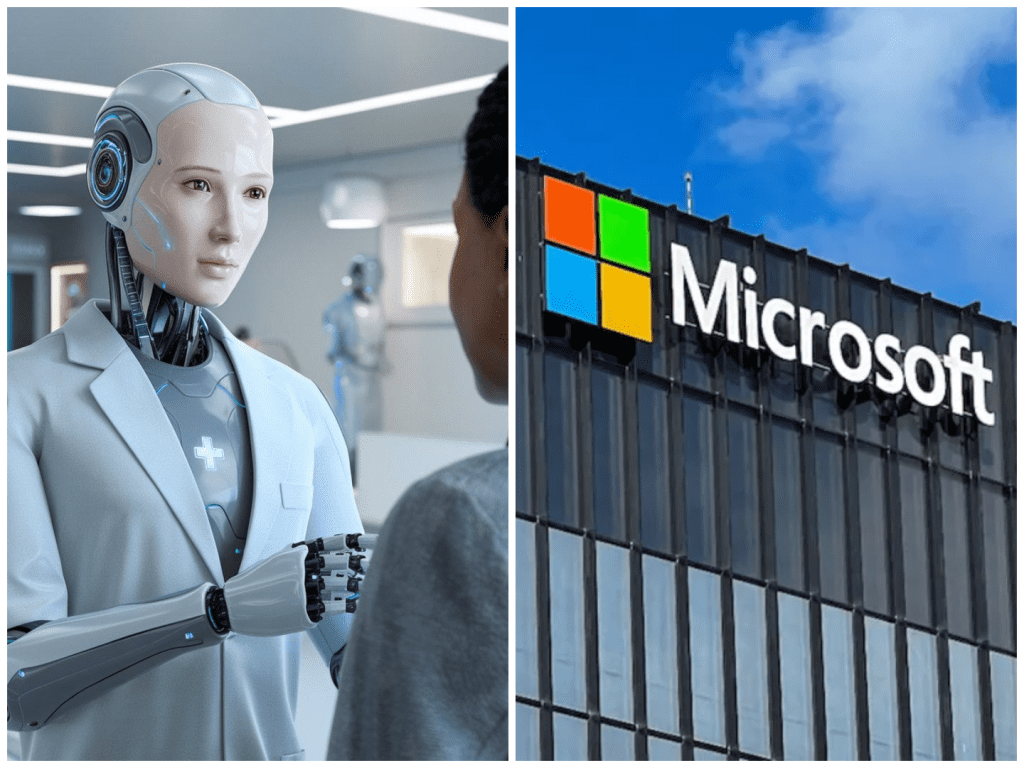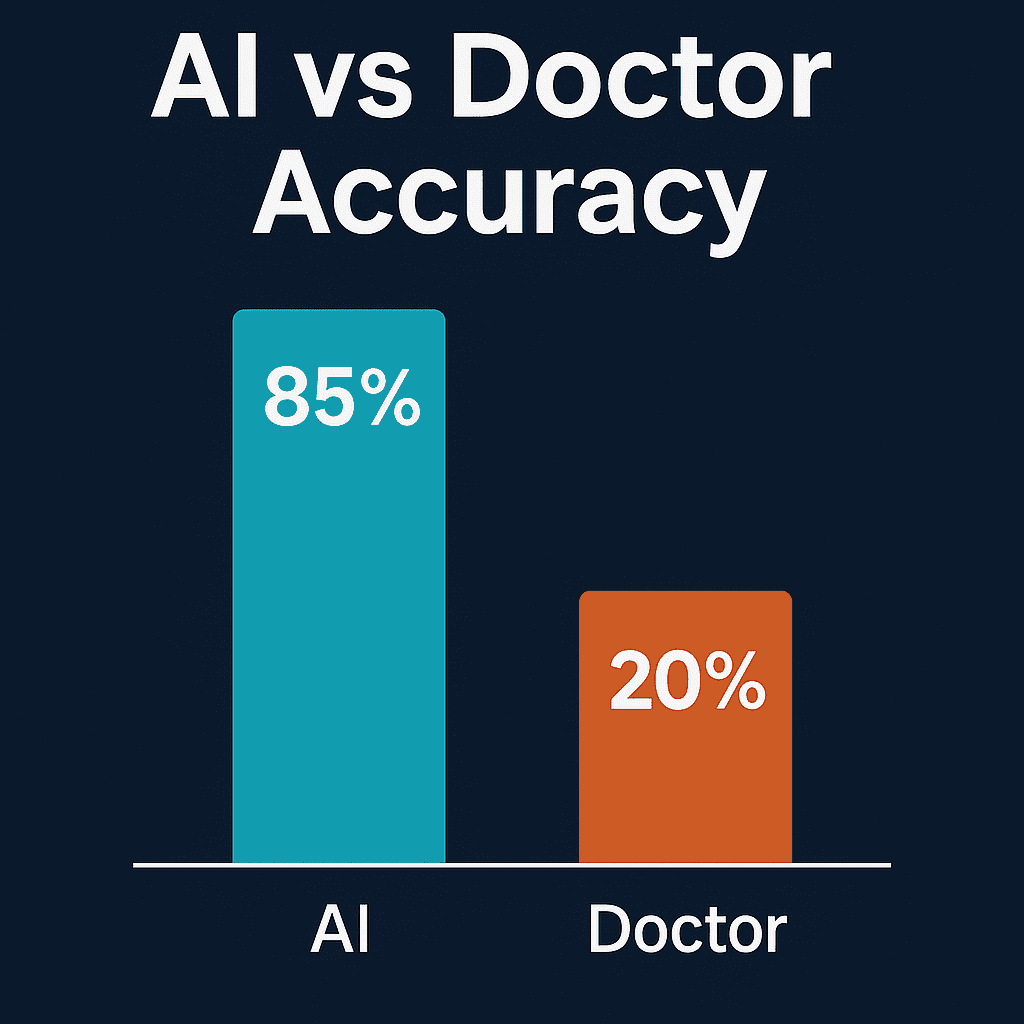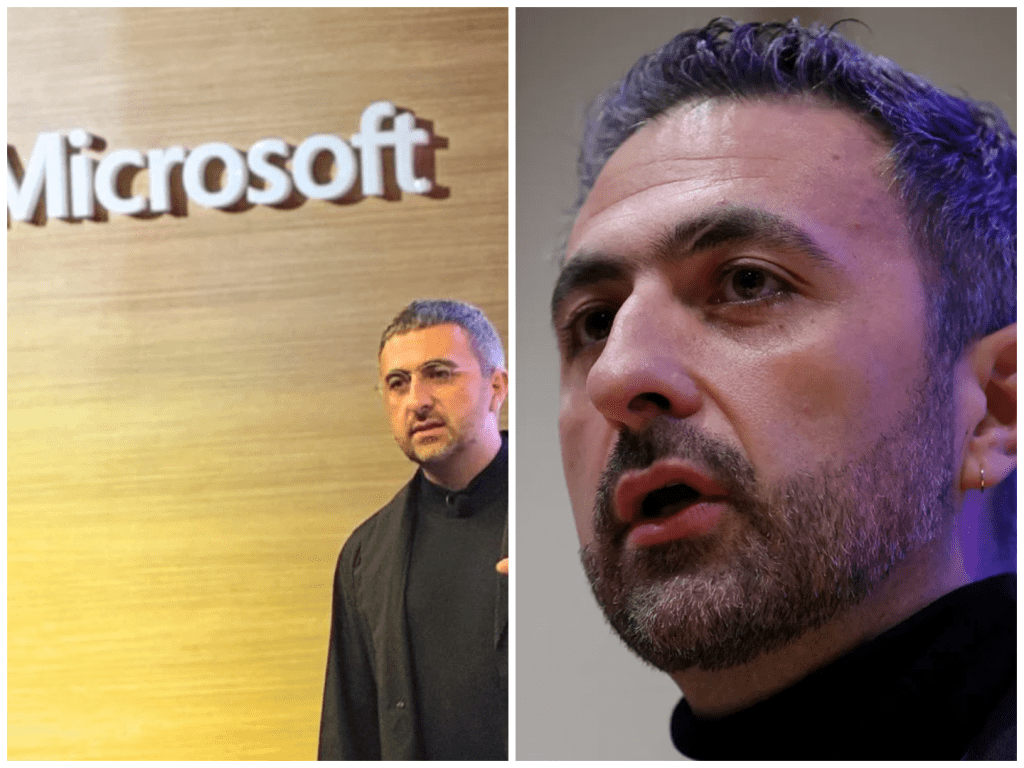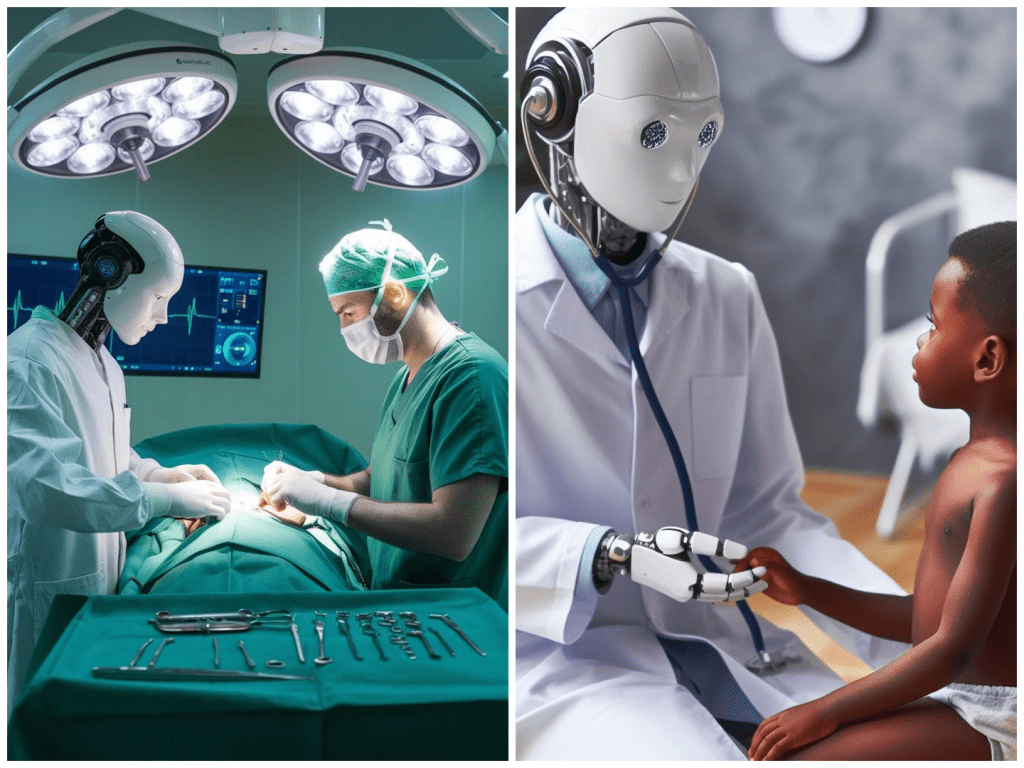Microsoft Unveils a Medical AI That Diagnoses With 4x the Accuracy of Doctors — Is This the Beginning of Medical Superintelligence?

The world of medicine has always danced between science and instinct. For centuries, doctors have relied on their training, intuition, and collaboration with peers to diagnose and treat the sick. Every heartbeat they listen to, every blood test they order, and every question they ask is part of a vast, fragile web of human judgment. But in 2025, something unprecedented has emerged—something that might change the very foundation of that dance. Microsoft, the tech giant known more for operating systems and cloud platforms than hospital wards, just unveiled something that has the potential to redefine modern diagnostics. It’s called the AI Diagnostic Orchestrator, or MAI-DxO. And according to its creators, it performs four times better than experienced doctors when it comes to solving the most complex medical mysteries.
When the announcement dropped, it barely made a ripple in mainstream news. Maybe that’s because the concept of AI doing human jobs is no longer shocking. But beneath the surface of tech headlines and corporate statements, what’s happening here is quietly profound. In a study conducted by Microsoft’s AI health unit—now led by former Google DeepMind co-founder Mustafa Suleyman—this AI was tested on 304 notoriously difficult cases pulled from the archives of the New England Journal of Medicine. These are not your average flu cases. These are diagnostic puzzles that stump even veteran clinicians. The result? The AI system achieved an astonishing 85 percent success rate. For comparison, a group of 21 practicing physicians from the U.S. and U.K. working alone, without internet access or reference tools, managed about 20 percent. It’s not just a win for AI—it’s a complete dismantling of what we’ve considered the gold standard of human diagnosis.

Now, what does that actually mean? Is the AI better than your family doctor? Not exactly. Because the tests were done in a lab-like setting, using extreme cases and restricting human doctors from using their usual tools—consulting colleagues, referencing literature, or running through decision trees they might normally use. But what the AI showed was something no system has ever done quite this well. It reasoned like a doctor. Not just any doctor—a whole panel of them. The system, MAI-DxO, doesn’t just spit out answers. It asks follow-up questions. It decides which tests to order. It weighs possibilities. It argues with itself. In fact, it works by orchestrating multiple AI models, each acting like a specialist. One model suggests a hypothesis. Another challenges it. A third proposes a different test. A fourth might weigh cost. It’s like simulating a debate among experts in your body’s best interest. It’s not magic. It’s something far more impressive: structured intelligence applied to the chaos of human biology.
And the cost angle? That part may have flown under the radar, but it’s just as jaw-dropping. While outperforming human doctors in diagnosis, the AI system also managed to reduce unnecessary testing by about 20 percent. That means fewer wasted resources, less time spent chasing red herrings, and more precise treatment paths. It doesn’t just diagnose better—it diagnoses smarter.

This achievement isn’t an accident. Mustafa Suleyman, now leading Microsoft AI’s health initiatives, has long championed the idea that artificial intelligence should work like a human reasoning system, not just a calculator. At DeepMind, he pushed for models that don’t just answer questions, but think through them. That vision has crystallized at Microsoft. MAI-DxO was built not just with one model but many. It integrates OpenAI’s o3, Anthropic’s Claude, Google’s Gemini, Meta’s Llama, and even Elon Musk’s xAI Grok. These models don’t just compete—they collaborate under orchestration. Think of it as an AI think tank inside your phone or hospital server, working tirelessly on one mission: figuring out what’s wrong with you.
Still, despite all the promise, MAI-DxO isn’t ready to take over the ER. Microsoft is careful to point out that this is still a research-stage tool. It hasn’t been approved by any regulatory body. It hasn’t been tested in the messy, chaotic, emotionally complex setting of a real hospital. It hasn’t been used on a live patient with a ticking clock and a terrified family waiting outside. And that’s critical. Because while AI can replicate logic, it doesn’t yet grasp context. It doesn’t sense fear. It doesn’t notice the subtle way a patient grips the edge of the bed when in pain, or the hesitation in a voice that says more than symptoms ever could.
Even so, the direction is undeniable. What Microsoft is building could one day be embedded in the tools doctors already use. It could become a second set of eyes, a quiet assistant whispering suggestions, flagging rare conditions, pointing out overlooked symptoms. Imagine a rural clinic with one tired doctor juggling dozens of patients. Now imagine that same doctor empowered with AI backup that never sleeps, never forgets a condition, never misses a test result. That’s not replacement—that’s augmentation. That’s partnership.
There’s a deeper truth to all this, though. Beneath the statistics and corporate demos is a quiet realization: this might be the beginning of something we’ll later call “medical superintelligence.” That’s not science fiction—it’s Suleyman’s own phrase. The dream is that AI won’t just help us match expert diagnosis. It will one day surpass it in every measurable way. It will deliver knowledge, skill, and care to corners of the world that have never had it. It will empower overwhelmed hospitals. It will catch diseases before symptoms even appear. But that dream also comes with responsibility. Because when you create something smarter than doctors, you have to ask: who controls it? Who decides how it’s used? Who protects the patient’s privacy? Who explains when it gets something wrong?
Microsoft has said all the right things. The company emphasizes transparency, ethical testing, fairness, and privacy. They say MAI-DxO doesn’t aim to replace clinicians but to support them. They admit it needs more trials. They acknowledge its limits. And that’s encouraging. But history teaches us that new technologies often move faster than ethics. Faster than policy. Faster than trust can keep up. So while the headlines talk about outperforming doctors, the real conversation should be about what happens next.

Because here’s the thing: this isn’t the last time AI will make headlines like this. The acceleration of machine learning, particularly in healthcare, is already well underway. Google, Amazon, and Apple are all exploring similar directions. OpenAI itself is rumored to be developing a patient-facing assistant. But Microsoft just threw down the gauntlet with MAI-DxO, and it’s not going away. It’s going to improve. It’s going to expand. It’s going to be tested on routine care, chronic illness, mental health, and beyond.
And eventually, it will be everywhere.
For now, though, the tool sits quietly in a lab, learning, reasoning, refining. Waiting for the day it gets unleashed into the real world. Maybe it starts in telehealth apps. Maybe it gets embedded in hospital systems. Maybe one day, you talk to it before you even see a nurse. And when that happens, the nature of healthcare will change—not overnight, but steadily, surely. Just like search engines changed how we learn, and navigation apps changed how we travel, medical AI will change how we understand our bodies. And it won’t just be about curing disease. It’ll be about knowing more, sooner, better.
You don’t need to be a tech expert to feel the weight of this shift. Just think about someone you love—someone who faced a medical mystery. Someone who waited months for a diagnosis, or bounced between doctors, or got dismissed when they knew something wasn’t right. Think about what it would have meant to have another opinion, an intelligent system that caught something everyone else missed. That’s the real promise here. Not just faster answers, but fairer ones. Not just more diagnoses, but fewer people falling through the cracks.
There’s still a long way to go. Regulations, real-world trials, public trust—they all need time. But what Microsoft has shown with MAI-DxO is that the path to medical superintelligence isn’t a fantasy. It’s not some futuristic hallucination. It’s here, in code, in numbers, in possibility. It’s early, but it’s real.
The next time you think about AI, don’t just think about chatbots and robots. Think about diagnosis. Think about empathy powered by algorithms. Think about a world where knowledge isn’t limited by geography or money or time. That’s the world MAI-DxO is trying to build. It won’t be perfect. But it might just be powerful enough to help us get closer to something that is.


